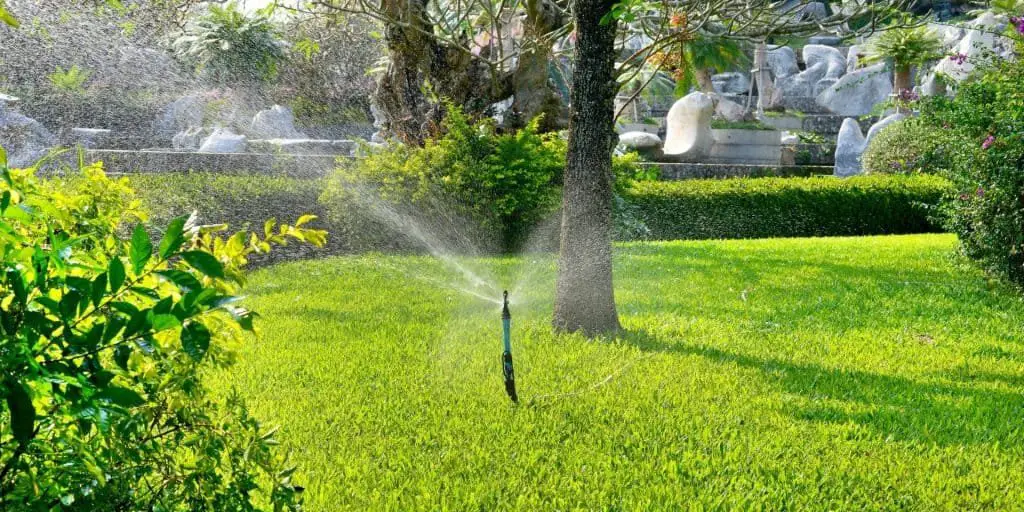
Best Methods for Watering New Grass
Your new grass seed is planted. Now, you need to know the best methods for watering new grass. Let’s face it, your lawn is an investment of both time and money. You planted your new grass seed yourself, or you hired a professional to seed your yard. Either way, your house is surrounded by a sea of dirt. You dream of a lush green lawn. Maybe you are even skeptical. There is no way this patch of dirt will ever be a yard to sink your bare feet into. But fear not. With proper watering, that patch of dirt will transform into beautiful green grass. Just keep in mind that now is the most important time in the life of your new lawn. Proper watering is essential to the success of your new grass.
Germination is the Key to Success
Germination is the process of the seedling sprouting from the seed, taking hold to the surrounding soil, and then breaking through the surface of the soil. Watering too much or too little can interfere with germination and actually kill your grass. Grass seed needs the proper amount of water to germinate and sprout into a new seedling. That new seedling also needs the proper amount of water to grow and mature.
Best Time of Year to Plant New Grass
The ideal time of year to plant your grass seed depends on where you live and what type of grass you are planting. The Scotts website advises planting cool-season grasses in the spring or fall. Cool-season grasses include Kentucky bluegrass, perennial ryegrass, and tall fescue. Warm-season grasses need warm soils to germinate so they need to be planted in early summer. Warm-season grasses include zoysia, centipede, and bermudagrass.
Best Time of Day for Watering New Grass Seed
The best time of day to water new grass seed is always during the coolest times of the day. Watering during the coolest times of the day will result in less water lost due to evaporation. That means more water into the ground and into your new grass seed. Take some time to observe the pattern of your sprinklers to ensure that all areas of your grass are being covered. If you find a dry area, adjust your sprinklers accordingly.
How Often to Water New Grass Seed
New grass seed should be watered two times a day. Obviously, since you need to water at the coolest times of the day, this means the best time to water your grass is in the morning and the evening. The easiest way to efficiently water your grass is to use a timer that will turn the water on and off. That way you don’t have to be home to turn the water on and off. It also eliminates the risk of forgetting to turn the water off and washing your new grass seed into a big puddle.
Once the grass seed has sprouted and you can see it growing, eliminate the second watering (unless you are in a very hot and dry climate) and continue watering once a day (preferably in the morning).
How Long to Water New Grass Seed
In general, you should water your new grass seed about ten minutes per session. Of course, this will vary according to your type of soil. If you have heavy clay soil that retains moisture, you may need to water for a little less time. If you have sandy soil that does not retain moisture, you may need to water a bit longer. A great way to check if your grass is getting enough moisture is to use the simple screwdriver test recommended by the Gilmour website. Simply insert a long screwdriver into the ground. If it pushes easily into the damp ground to a depth of about 6 to 8 inches, then you have proper saturation.
How Long Does Grass Seed Take to Grow?
The Nature Seed website states that it takes 5 to 30 days for germination, depending on the type of grass seed and growing conditions. Growing conditions include, light, water, temperature, and, of course, soil conditions. Initially, your grass will look very thin. Eventually, however, it will thicken and fill out nicely.
Should I Mulch My New Grass Seed?
Mulching your new grass seed with clean straw is a great way to retain moisture, prevent birds from eating the grass seed, and prevent grass seed from washing away on slopes. Once the grass sprouts, remove the straw. Straw is readily available in most areas and a fairly affordable form of mulch.
Nature is On Your Side
Luckily, the grasses that we use to cover our lawns are tried and true. They have been used with great success for years. As long as you stick to grasses that are appropriate for your location, and water properly, you are almost guaranteed to transform that patch of dirt into a lush lawn that your bare feet will love.
Related posts:
- Flowering Herbs: 14 Great Ornamental Herbs
- Gardening Kits For Kids – 8 Great Choices!
- Affordable Ways to Remove a Tree Stump
- Flowers That Attract Bees to Your Garden







